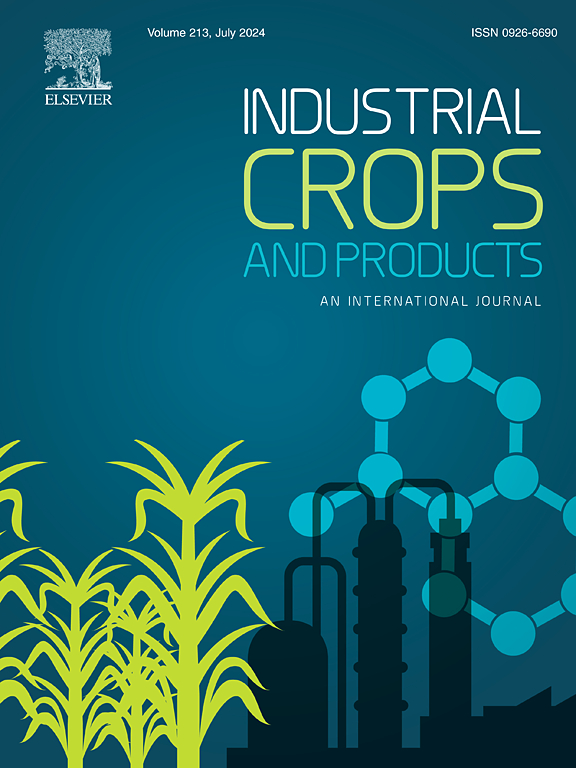Converting waste Chrysanthemi Flos residues into high-value fluorescent carbon dots for rapid and selective detection of mercury (II) ions in aqueous environments
IF 5.6
1区 农林科学
Q1 AGRICULTURAL ENGINEERING
引用次数: 0
Abstract
Chrysanthemi Flos (CF) is widely used as an edible and medicinal crop, resulting in large amounts of residue production annually. The discarded CF residues (CFR) cause environmental pollution and wastage of resources. Converting CFR into functional carbon dots (CDs) is an important strategy to achieve its “waste-to-wealth” goal. Here, a CFR-derived CDs (CFR-CDs) based fluorescent sensor was successfully developed for the rapid and selective detection of mercury (Ⅱ) ions in aqueous environments, and its sensing mechanism for detecting Hg2+ was elucidated. First, the CFR was used as a precursor to extract fluorescent CDs via a simple and green hydrothermal method. The prepared CFR-CDs possessed a typical graphite-like structure with an average size of 2.23 nm, and exhibited good hydrophilicity, excellent photostability, and excitation-dependence fluorescence behavior, while emitting blue fluorescence. Interestingly, the CFR-CDs were highly selective towards Hg2+, and their fluorescence was rapidly quenched by Hg2+ (within 1 min). The prepared CFR-CDs were then used as a fluorescent sensor for efficient detection of Hg2+ in the range of 0.3–10 μmol/L with a low limit of detection (LOD) of 0.129 μmol/L. The recovery of the Hg2+ in actual water environments ranged between 98.60 % and 104.00 % with a relative standard deviation < 5.0 %, demonstrating the reliability of the developed sensor. Additionally, the detection mechanism was revealed to be the synergistic action of the static quenching effect (SQE), inner filter effect (IFE) and photo-induced electron transfer (PET), generating CFR-CDs/Hg2+ complexes through the formation of surface chemical bonds and promoting the rapid shutdown of the sensor signal. This study demonstrates, for the first time, the application of CFR towards producing green and low-cost CDs as promising fluorescent sensor for the detection of Hg2+ in actual environmental samples, and is therefore helpful for improving the utilization efficiency of CFR and promoting the realization of carbon peak and carbon neutrality goals.
求助全文
约1分钟内获得全文
求助全文
来源期刊

Industrial Crops and Products
农林科学-农业工程
CiteScore
9.50
自引率
8.50%
发文量
1518
审稿时长
43 days
期刊介绍:
Industrial Crops and Products is an International Journal publishing academic and industrial research on industrial (defined as non-food/non-feed) crops and products. Papers concern both crop-oriented and bio-based materials from crops-oriented research, and should be of interest to an international audience, hypothesis driven, and where comparisons are made statistics performed.
 求助内容:
求助内容: 应助结果提醒方式:
应助结果提醒方式:


